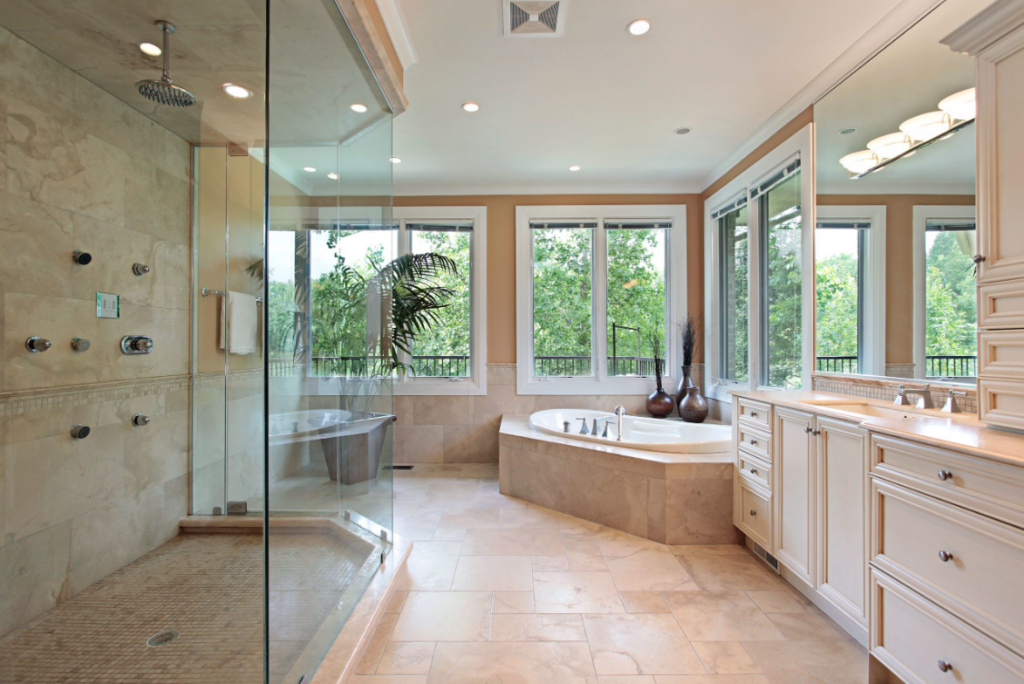The charm of a classically designed bathroom is undeniably captivating, an aspect that can be attributed to its timeless elegance and enduring aesthetics.
The allure of traditional style lies in the use of classic design principles that incorporate elements such as symmetry, proportion, and detailed architectural features.
As these elements are universally appealing, they effectively satisfy the subconscious desire for harmony and balance.
Moreover, this design approach emphasizes on durability and utility, resulting in a space that not only exhibits visual appeal but also functionality.
In order to successfully implement these ageless aesthetics into one’s own bathroom space, it is imperative to understand the key aspects of traditional design.
This involves studying how different components work together to create a harmonious ambiance while ensuring practicality remains at the forefront of planning considerations.
By gaining an informed understanding of these principles, individuals can employ them in their remodeling projects with confidence and finesse; thus creating bathrooms that exude a sense of timeless beauty whilst meeting modern-day needs effectively.
Understanding Key Elements of Traditional Style
In grasping the essence of traditional style, it is crucial to comprehend its key elements which include symmetrical arrangements, rich color palettes, and classic artwork.
Symmetry provides a sense of balance and orderliness that imbues an environment with tranquility and sophistication. Traditional design often employs pairs or multiples to create this harmonious effect – dual sinks in a bathroom, matching wall sconces on either side of a mirror, or coordinated towel racks are all examples of this principle in action.
Rich color palettes infuse warmth into spaces; think deep browns, golds, greens and reds that evoke an inviting ambiance.
Classic artwork completes the aesthetic by introducing timeless beauty through pieces that have stood the test of time.
The integration of these elements requires delicate finesse to ensure they coalesce seamlessly without overpowering each other. The use of wood in cabinetry or as architectural detailing brings forth the warm hues inherent in traditional design while maintaining a sense of grandeur.
Similarly, incorporating classic fixtures such as claw-foot tubs or pedestal sinks can heighten the sense of history and craftsmanship embodied within this style.
It is important to note however that adherence to these principles does not necessitate rigidity but rather invites interpretation based on personal preferences and contexts. This adaptability allows for individual expression within defined parameters thereby fostering a sense of belonging while respecting the tenets central to traditional design ethos.
Implementing Lasting Aesthetics in Your Space
Casting a vision for enduring aesthetics in a personal sanctuary requires an understanding of architectural balance, harmonious color schemes and quality materials; it is akin to composing a symphony that resonates with beauty and harmony year after year.
The process of integrating lasting aesthetics into one’s bathroom space involves meticulous planning, thoughtful selection and an appreciation for the time-honored principles of design. Just as the virtuoso carefully selects each note to form a timeless melody, so too must the designer curate each element to form a cohesive whole.
Designing with longevity in mind requires an emphasis on several essential elements:
* Architectural Balance: Through careful arrangement and proportioning of elements within the space, visual equilibrium can be achieved. This often involves symmetry or mirroring certain aspects but also allows for asymmetric balance which provides dynamic interest.
* Traditional concepts like the golden ratio may guide spatial division while modern principles highlight zoning based on functionality.
* Incorporating architectural features such as arches, moldings or columns can further enhance visual harmony.
* Harmonious Color Schemes: A well-chosen palette forms the backdrop against which all other elements are juxtaposed.
* Neutral hues promise timeless appeal and offer flexibility through changing trends.
* Complementary colors or varying shades of a single color can create depth and dimension.
* Quality Materials: These not only ensure durability but also contribute significantly to aesthetic value.
* Natural materials like stone, wood or marble exude sophistication while providing unique textures and patterns.
* High-quality fixtures made from brass or stainless steel add lustre without compromising on longevity.
In conclusion, creating lasting aesthetics is much more than mere decoration; it is about crafting an engaging story that appeals to one’s subconscious desire for belonging. It is about weaving together various threads – balance, color, material – into a seamless tapestry that speaks not just of style but substance too.


